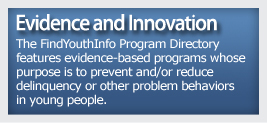Teen Dating Violence
Healthy relationships consist of trust, honesty, respect, equality, and compromise.1 Unfortunately, teen dating violence—the type of intimate partner violence that occurs between two young people who are, or who were once in, an intimate relationship—is a serious problem in the United States. A national survey found that ten percent of teens, female and male, had been the victims of physical dating violence within the past year2 and approximately 29 percent of adolescents reported being verbally or psychologically abused within the previous year.3
Teen dating violence can be any one, or a combination, of the following:
- Physical. This includes pinching, hitting, shoving, or kicking.
- Emotional. This involves threatening a partner or harming his or her sense of self-worth. Examples include name calling, controlling/jealous behaviors, consistent monitoring, shaming, bullying (online, texting, and in person), intentionally embarrassing him/her, keeping him/her away from friends and family.
- Sexual. This is defined as forcing a partner to engage in a sex act when he or she does not or cannot consent.
It can negatively influence the development of healthy sexuality, intimacy, and identity as youth grow into adulthood4 and can increase the risk of physical injury, poor academic performance, binge drinking, suicide attempts, unhealthy sexual behaviors, substance abuse, negative body image and self-esteem, and violence in future relationships.5
Teen dating violence can be prevented, especially when there is a focus on reducing risk factors as well as fostering protective factors, and when teens are empowered through family, friends, and others (including role models such as teachers, coaches, mentors, and youth group leaders) to lead healthy lives and establish healthy relationships. It is important to create spaces, such as school communities, where the behavioral norms are not tolerant of abuse in dating relationships. The message must be clear that treating people in abusive ways will not be accepted, and policies must enforce this message to keep students safe.
1 U.S. Department of Health and Human Services, 2011
2 CDC, 2010
3 Halpern, Oslak, Young, Waller, Markin, & Kupper, 2001
4 Foshee & Reyes, 2009
5 CDC, 2012
2 CDC, 2010
3 Halpern, Oslak, Young, Waller, Markin, & Kupper, 2001
4 Foshee & Reyes, 2009
5 CDC, 2012
Feature Articles
Tools & Guides
Technical Assistance
Websites
Videos & Podcasts
Hotlines
Agencies
Departments
 |
National Teen Dating Violence Awareness and Prevention Month Teen dating violence— also called intimate relationship violence or intimate partner violence among adolescents or adolescent relationship abuse — includes physical, psychological or sexual abuse; harassment; or stalking of any person ages 12 to 18 in the context of a past or present romantic or consensual relationship. |
 |
Justice Department Research Shows That School-Level Interventions Reduce Dating Violence by up to 50 Percent The Department of Justice today announced new research from the National Institute of Justice (NIJ) that finds school-level interventions reduced dating violence among middle school students by up to 50 percent in 30 New York City public schools. |
 |
February is Teen Dating Violence Awareness and Prevention Month The Justice Department worked with the Senate to designate the entire month of February as National Teen Dating Violence Awareness and Prevention Month. |
 |
Teen Dating Violence Prevention Teen dating violence is an often-unrecognized subcategory of domestic violence. Although there is research on rates of crime and victimization related to teen dating violence, research that examines the problem from a longitudinal perspective and considers the dynamics and perceptions of teen romantic relationships is lacking. |
 |
Teen Dating Relationships: Opportunities for Youth to Define What's Healthy and Unhealthy The Federal Interagency Workgroup on Teen Dating Violence, in collaboration with Concept Systems, Inc. (CSI), is conducting research to better understand how youth conceptualize healthy and unhealthy dating relationships. |
 |
Dating Matters: Understanding Teen Dating Violence Prevention Early efforts to promote healthy, respectful dating relationships are more likely to prevent dating violence before the problem begins. |

- Characteristics of Healthy & Unhealthy Relationships
- Prevalence of Teen Dating Violence
- Electronic Aggression and Teen Dating Violence
- Teen Dating Violence and Gender
- Youth At Risk of Teen Dating Violence
- Preventing Teen Dating Violence
- Consequences of Teen Dating Violence
- Legal Responses to Teen Dating Violence
- Resources for Victims of Teen Dating Violence
- Public Awareness About Teen Dating Violence
- Additional Federal Resources
- References

Announcements
Feature Articles

Map My Community is a tool designed specifically to assist you in locating resources in your community to help you build and strengthen your youth program. Get ideas for new partnerships, identify gaps in your community, and learn about resources to avoid duplication of effort.



















